For March 2013, the National Women’s History Project selected the theme, “Women Inspiring Innovation Through Imagination: Celebrating Women in Science, Technology, Engineering, and Mathematics.” It is with great pleasure that we announce the Honorees for National Women’s History Month 2013. The 18 women chosen are all extraordinary visionaries and role models in the STEM fields, where women are still noticeably underrepresented.
The 2013 Honorees represent a remarkable range of accomplishments and a wide diversity of specialties including medicine, robotics, computer programming, atmospheric chemistry, architecture and primatology. These women’s lives and work span the centuries of American history and come from different cultural and ethnic backgrounds. We are proud to honor them and all women seeking to advance these important fields.
We extend our sincere thanks to our supporters, who nominated over 115 outstanding women. The Selection Committee faced a very difficult task in narrowing the list to 18. We also want to congratulate and celebrate all of the notable women who were nominated. A complete list follows of the 18 Honorees for 2013.
|

|
Hattie Elizabeth Alexander (1901–1968)
Pediatrician and Microbiologist
Hattie Alexander developed the first effective remedies for Haemophilus influenzae, reducing the mortality rate from nearly 100 percent to less than 25 percent. Alexander was also among the first scientists to identify and study antibiotic resistance, which she correctly concluded was caused by random genetic mutations in DNA. In 1964, she became the first woman elected president of the American Pediatric Society.
|
|

|
Marlyn Barrett (1954)
K-12 STEM Educator
Marlyn Barrett is a coordinator of science instruction for Worcester County Public Schools and a project director for a grant which provides professional development for 135 teachers in 14 counties throughout Maryland. Her responsibilities include directing the grant, meeting with other county coordinators and higher education partners, and teacher training, impacting thousands of Maryland students and inspiring them to become the future of science.
|
|
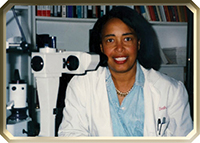
|
Patricia Era Bath (1942)
Ophthalmologist and Inventor
Patricia Bath’s invention of the Laserphaco Probe was an important milestone in the advent of laser cataract surgery. Bath co-founded the American Institute for the Prevention of Blindness (1976) committed to “protect, preserve, and restore the gift of sight.” She broke ground for both women and African Americans in medicine and ophthalmology, including being the first African American woman doctor to receive a patent for a medical purpose.
|
|
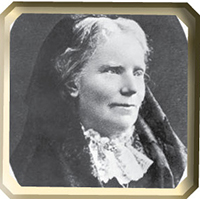
|
Elizabeth Blackwell (1821–1910)
Physician
Elizabeth Blackwell was the first fully accredited female doctor in the United States. She, along with her sister, Emily, founded the first medical school for women, resulting in greater acceptance of female physicians, more opportunities for meaningful work for American women, and stricter standards for medical schools as a whole.
|
|
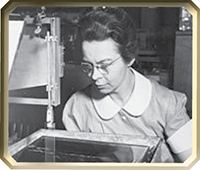
|
Katharine Burr Blodgett (1898–1979)
Physicist and Inventor
Katharine Blodgett was the first woman awarded a Ph.D. in Physics from the University of Cambridge (1926) and the first woman research scientist for General Electric’s Schenectady, New York laboratory (1920). Blodgett received eight US patents, most famously for inventing low-reflectance “invisible” glass. The legacy of her work is still seen today in camera lenses, computer screens, eyeglasses, and many other applications.
|
|
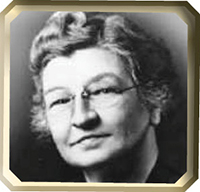
|
Edith Clarke (1883–1959)
Electrical Engineer
Edith Clarke was the first woman to earn an M.S. in electrical engineering from Massachusetts Institute of Technology (1919) and the first woman professor of electrical engineering in the US (University of Texas at Austin 1947). Before teaching, Clarke worked much of her career as an engineer for General Electric. She invented the Clarke Calculator, a graphical device for solving power transmission line equations, and is also well known for authoring an influential textbook on power engineering.
|
|
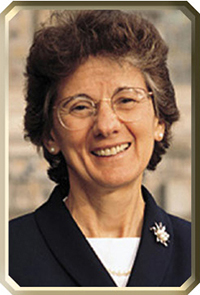
|
Rita R. Colwell (1934)
Molecular Microbial Ecologist and Scientific Administrator
Rita Colwell, Ph.D. served as the first woman Director of the National Science Foundation (1998-2004), where she exemplified the importance of STEM education by her leadership in K-12 STEM education, graduate STEM education, and the increased participation of women and minorities in science and engineering. Colwell has also served in many leadership and advisory positions for scientific organizations and government agencies. Her award-winning scientific work is focused on water borne diseases of public health significance.
|
|
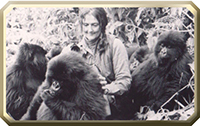
|
Dian Fossey (1932–1985)
Primatologist and Naturalist
For 18 years Dian Fossey studied, lived amongst, and befriended the gorillas of Rwanda. Fossey made many discoveries about gorillas including understanding gorilla vocalizations, gorilla group hierarchies and social relationships, and gorilla diet and recycling of nutrition. Her book, Gorillas in the Mist (1983) documented her intense study of these animals and the need to protect them from the constant threat of poachers and neglect.
|
|
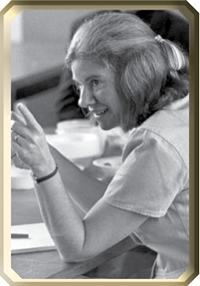
|
Susan A. Gerbi (1944)
Molecular Cell Biologist
Susan A. Gerbi is the George Eggleston Professor of Biochemistry at Brown University, where her research team devised a method to map the start site of DNA replication at the nucleotide level. Her current research suggests that a steroid hormone receptor may play a direct role for regulating the initiation of DNA replication, with potential significance to understand the role of hormones in certain cancers. She also studies eukaryotic ribosomes, the cellular factories for protein synthesis.
|
|
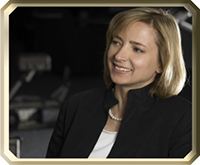
|
Helen Greiner (1967)
Mechanical Engineer and Roboticist
Helen Greiner is co-founder and former President/Chairman of iRobot Corporation, a world leader in consumer and military robots, and current CEO of CyPhyWorks. She is also a Trustee of the Massachusetts Institute of Technology (MIT) and the Boston Museum of Science (MOS), serves on the Robotics Advisory Board of Worcester Polytechnic Institute (WPI) and Army War College (AWC), and is a member of the Army Science Board (ASB).
|
|
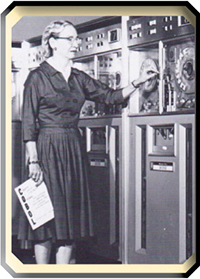
|
Grace Murray Hopper (1906–1992)
Computer Scientist
Grace Hopper was a pioneering computer scientist and Rear Admiral in the United States Navy. Hopper joined the Navy Reserve during World War II and worked as one of the first programmers of the Harvard Mark 1 Computer. She later wrote the first computer programming compiler (1952) and conceptualized COBOL, on of the first modern programming language (1954). Upon her retirement she was awarded the Defense Distinguished Service Medal, the highest non-combat award given by the Department of Defense.
|
|
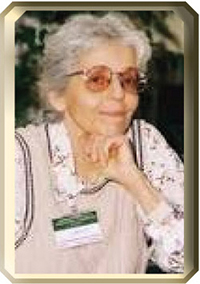
|
Olga Frances Linares (1936)
Anthropologist and Archaeologist
Olga Linares is a senior staff scientist (emerita) at the Smithsonian Tropical Research Institute. Her work centers on the social organization and agrarian practices of the Jola peoples living in the Casamance region of Southern Senegal. Formerly, she also did research on the archaeology and ethnography of Central America.
|
|

|
Julia Morgan (1872–1957)
Architect
Julia Morgan was the first woman admitted to the architecture program at l’École nationale supérieure des Beaux-Arts in Paris, and the first woman architect licensed in California. Morgan designed over 700 buildings in California and is best known for her work on Hearst Castle in San Simeon. Many of her projects, including designing numerous YWCA buildings and facilities at Mills (women’s) College, sought to advance opportunities for women.
|
|
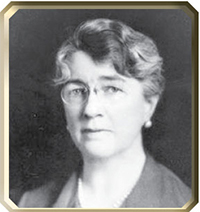
|
Louise Pearce (1885–1959)
Physician and Pathologist
Louise Pearce was a physician and pathologist with the Rockefeller Institute. Pearce worked on the team that found a cure for African Sleeping Sickness (1919) and made a solo trip to the Belgian Congo to test the new drug (1920). From 1923 until her retirement in 1951 she researched susceptibility or resistance to infection with Dr. Wade Hampton Brown. Their discovery of a transplantable rabbit tumor was studied in cancer laboratories around the world.
|
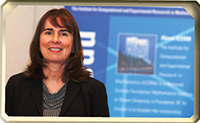 |
Jill Pipher (1955)
Mathematician
Jill Pipher is president of the Association of Women in Mathematics (2011), and director of the Institute for Computational and Experimental Research in Mathematics (2011). The ICERM is a NSF funded mathematics institute supporting cutting edge research on the intersections of mathematics and computers. Pipher is a professor of Mathematics at Brown University and has research interests in harmonic analysis, partial differential equations, and cryptography.
|
|

|
Mary G. Ross (1908–2008)
Mechanical Engineer
Mary Ross was the first woman engineer at Lockheed’s Missiles Systems Division (1952), and the first known Native American woman engineer. At Lockheed, Ross designed missiles and rockets, and developed systems for human space flight and interplanetary missions to Mars and Venus. After retiring, she began a second career as an advocate for women and Native Americans in engineering and mathematics.
|
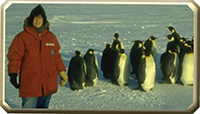 |
Susan Solomon (1956)
Atmospheric Chemist
Susan Solomon is the Ellen Swallow Richards Professor of atmospheric chemistry and climate science at the Massachusetts Institute of Technology. Her groundbreaking research on chlorofluorocarbons (CFCs) as the cause of the Antarctic ozone hole was part of the basis of the international treaty that has effectively regulated damaging chemicals. She is also a leader in climate science, and is best known for seminal work showing that climate changes due to human increases in carbon dioxide will last for more than a thousand years.
|
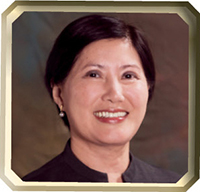 |
Flossie Wong-Staal (1946)
Virologist and Molecular Biologist
Flossie Wong-Staal is one of the world’s foremost authorities in the field of virology. Wong-Staal was a pioneering researcher of retroviruses and with her team deciphered the structure of the HIV virus as the cause of AIDS. She was the first to clone and complete the genetic mapping of HIV making it possible to develop HIV tests. Wong-Staal continues her pioneering work in developing first-in-class therapeutics against Hepatitis C virus.
|
2013 Honoree Nominees
Alexis Abramson (1973)
Mechanical Engineer
Ann Bancroft (1955)
Explorer, Educator
Florence Bascom (1862-1945)
Geologist
Helen M. Berman (1943)
Structural Biologist
Anita Borg (1949–2003)
Computer Scientist
Trena Brannon (1961)
Logistical Engineer
Yvonne Brill (1924)
Engineer
Rachel Fuller Brown
(1898–1980)
Chemist, Inventor
Tamara Brown (1971)
Chemical Engineer, Founder of Tech Savvy
Linda Buck (1947)
Physiologist, Nobel Prize Laureate
Annie Jump Cannon
(1863–1941) Astronomer,
Co-Creator of Harvard Classification Scheme for Stars
Sherita Ceasar (1969)
Mechanical Engineer
Mary Cleave (1947)
Astronaut, Engineer
Rachel Carson (1907– 1964)
Marine Biologist, Conservationist, Author
Mildred Cohn (1913–2009)
Biological Chemist
Jane Colden (1724–1766)
Botanist
Gerty Cori (1896–1957)
Biochemist, Nobel Prize Laureate
Donna J. Dean (1947)
Biochemist
Olive Wetzel Dennis
(1885–1957) Civil Engineer
Gail de Planque (1944–2010)
Physicist
Kimberly Drake (1970)
Mathematician
Mildred Dresselhaus (1930)
Electrical Engineer
Bonnie Dunbar (1949)
Astronaut
Sylvia Earle (1935)
Oceanographer, Conservationist
Gertrude Belle Elion
(1918–1999)
Chemist, Nobel Prize Laureate
Thelma Estrin (1924)
Computer Scientist
Alice Evans (1881–1975)
Bacteriologist
Irmgard Flugge-Lotz
(1903–1974)
Mathematician, Engineer
Wally Funk (1939)
Among the original Mercury 13 Women Astronauts
Catherine Furbish (1834–1931)
Botanist
Eileen Game (1955)
Computer Scientist
Katharine Gibbs (1863–1934)
Founder of Katharine Gibbs School
Lillian Moller Gilbreth
(1878–1972)
Efficiency-Management Expert
Kate Gleason (1865–1933)
1st Woman Engineering Student at Cornell University
Maria Goeppert-Mayer
(1906–1972)
Physicist, Nobel Prize Laureate
Lois Graham (1946)
Mechanical Engineer
Alison Harlow (1934)
Mathematician, Co-Founder of the Covenant of the Goddess
Margaret Harwood
(1885–1979) Astronomer
Euphemia Lofton Haynes (1890–1980)
Mathematician
Elizabeth Lee Hazen
(1885–1975)
Bacteriologist, Inventor
Beatrice A. Hicks (1919–1979)
Engineer
Susan Hockfield (1951)
Neurobiologist, 16th President of MIT
E. Dorrit Hoffleit (1907–2007)
Astronomer
Erna Schneider Hoover (1926)
Inventor, Received Early Computer Software Patents
Shirley Ann Jackson (1946)
Theoretical Physicist, 1st Black Woman to Earn Doctorate at MIT
F. Suzanne Jenniches (1948)
Engineer
Teresa E. Jordan (1953)
Geologist
Frances Oldham Kelsey (1914)
Physician, Pharmacologist
Stephanie Kwolekn (1965)
Chemist, Inventor of Kevlar Vests
Christine Ladd-Franklin
(1847–1930) Mathematician
Caitlin Lamoreaux
Math Educator
Phoebe Starfield Leboy
(1913–2012) Biochemist
Carolyn R. Mahoney
Mathematician
Joanna O. Masingila (1960)
Mathematician
Martha Dartt Maxwell
(1831–1881) Taxidermist
Barbara McClintock
(1902–1992) Cytogeneticist, Nobel Prize Laureate
Maria Mitchell Maria
(1818–1889) Astronomer, Discovered Telescopic Comet
Ellen Ochoa (1958)
Astronaut, Inventor
Sue Caley Opsal (1967)
Professor of Anatomy and Physiology
Claire L. Parkinson (1948)
Climate Change Scientist
Ruth Patrick (1907)
Botanist, Limnologist
Mary Engle Pennington
(1872–1952)
Bacteriological Chemist
Jeanne Pincha–Tulley (1958)
Forest Service Firefighter, 1st Woman Incident Cmndr. Type 1
Judith Graham Pool
(1919–1975) Physiologist
Lisa Randall (1962)
Theoretical Physicist
Dixy Lee Ray (1914–1994)
Marine Biologist, Chaired the Atomic Energy Commission
Sally Ride (1951–2012)
Astronaut
1st U.S. Woman in Space
Judith Resnik (1949–1986)
Astronaut
2nd U.S. Woman in Space
Ellen Swallow Richards
(1842–1911) Chemist
1st Woman Graduate from MIT
Julia Robinson (1919–1985)
Mathematician
Terri Roessler (1963)
Management Innovator
Vera Rubin (1928)
Astronomer
Florence Sabin (1871–1953)
Physician, Medical Scientist
Heidi Schreuder-Gibson (1958)
Polymer Scientist
Florence B. Seibert (1897–1991)
Biochemist
Ellen Churchill Semple
(1863–1932) Geographer
Maude Slye (1879–1954)
Pathologist, Cancer Researcher
Nettie Stevens (1861–1912)
Biologist
Harriet Williams Russell Strong (1844–1926)
Inventor, Agricultural Entrepreneur
Maria Telkes (1900–1995)
Physical Chemist, Solar Engineer, Inventor
Julie Theriot (1967)
Microbiologist
Marjolein Van der Meulen (1965)
Biomedical Engineer
Sophie Vanceboro (1962)
Electrical Engineer
Sheila Widnall (1938)
Astrophysicist, 1st woman head
of U.S. Military branch, Air Force
Y.C.L. (Susan) Wu (1932)
Aerospace Engineer
Chien-Shiung Wu (1912–1997)
Physicist
Rosalyn Yalow (1921–2011)
Medical Physicist, Nobel Prize Laureate


















